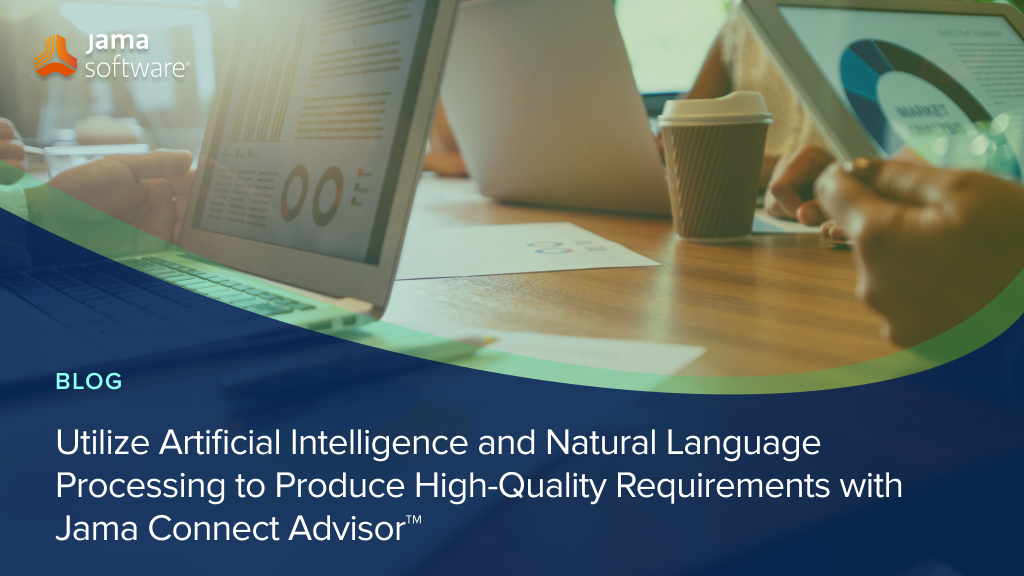
Utilize Artificial Intelligence and Natural Language Processing to Produce High-Quality Requirements with Jama Connect Advisor™
When discussing the requirements management process with my clients, I’ll often say, “the first step in maturing your requirements management process is to use an enterprise tool such as “Jama Connect.” This allows for scalability of their process and more importantly, the ability to manage change across their product lifecycle. Features such as the Review Center, Baseline Capture and Compare, Collaboration, Suspect Triggers and Variant Management are all necessary parts of the process that allow for tight control and the ability to meet the most rigorous of standards. Once that message becomes clear to my clients and the benefit realized, the next aspect of the conversation is, “Can you write GOOD, high-quality requirements?” It’s one thing to get your requirements into a formal tool, but what if the requirements aren’t any good to begin with? As the old adage says, “garbage in, garbage out”. This problem becomes magnified to a dangerous extent when your requirements define life-saving devices or mission-critical hardware and software.
RELATED: Jama Connect Advisor™ Datasheet
How Jama Connect® Uses Natural Language Processing to Improve Quality
Enter Jama Connect Advisor to the conversation. Jama Connect Advisor is a state-of-the-art requirements authoring guide and optimizer powered by natural language processing that helps a system engineer or a product developer write effective, well-organized requirement specifications based on industry-accepted INCOSE (International Council on Systems Engineering) rules and the EARS (Easy Approach to Requirements Syntax) notation.
Jama Connect Advisor allows you to analyze requirements text to provide a quality score based on the INCOSE and/or EARS rules the user chooses to validate against. This analysis can be done on a single item or “in bulk” against multiple requirements. Reports provide a detailed overview of the quality and score of the requirements. This allows for requirements authors to iterate on their requirements and improve the scores, ultimately resulting in better quality requirements across the entire lifecycle.
When all of your downstream requirements and tests are dependent on how a requirement is defined, it is extremely important that the quality of the requirements are there from day one. With the proliferation of Artificial Intelligence and Natural Language Processing, it is a natural extension to apply these techniques to requirements management creation and elaboration.
A Continued Investment in AI and How it Relates to Better Requirements Management
Jama Software continues to make strides in this area and we have recently relaunched our Jama Labs Website. Some of the exciting functionality we are exploring includes:
- Automatically detecting high-risk areas in requirements by analyzing review comments
- AI-generated test cases derived from requirements
- Auto-scanning existing IP, to discover reuse candidates, which improves efficiency and saves time.
RELATED: Artificial Intelligence in Requirements Management
Conclusion:
The maturity and scale of your requirements process doesn’t end with managing them in a formal tool. There must be a focus on defining good, quality requirements and the ability to detect and report on the quality in real time easily. This visibility allows for authors to quickly update their requirements for better quality from the beginning. When everything downstream depends on it, the quality of your requirements truly does matter.
Visit our labs website to learn more. labs.jamasoftware.com
- Jama Connect® Earns the 2026 TrustRadius Buyer’s Choice Award - November 20, 2025
- Jama Connect® Features in Five: Review Center for Semiconductor Development - November 14, 2025
- Jama Connect®: Built for Enterprise-Scale Success - November 13, 2025